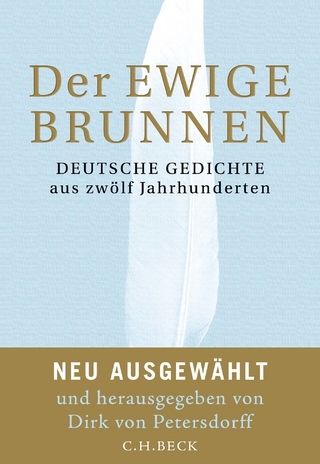
The Complete Clay Sanskrit Library
56-volume Set
Seiten
2009
New York University Press (Verlag)
978-0-8147-1743-1 (ISBN)
New York University Press (Verlag)
978-0-8147-1743-1 (ISBN)
- Titel z.Zt. nicht lieferbar
- Versandkostenfrei innerhalb Deutschlands
- Auch auf Rechnung
- Verfügbarkeit in der Filiale vor Ort prüfen
- Artikel merken
The Clay Sanskrit Library, co-published by NYU Press and the JJC Foundation, has been created to introduce classical Sanskrit literature to a wide international readership. This literature combines great beauty, enormous variety and more than three thousand years of continuous history and development.
Finally, the ancient gems of classical Sanskrit literature are available to a wide audience. This literature combines great beauty, enormous variety, and more than 3,000 years of continuous history and development. The Clay Sanskrit Library makes everything easier for any reader: the Sanskrit text, written in familiar Roman letters, faces a fresh English translation, and the convenient pocket size is both elegant and practical. This exciting collection includes many volumes from the two beloved Indian epics, the Ramayana and the Maha*bharata, in addition to other classics of Sanskrit literature. Each book is published in a jacketed hardcover edition, in a compact 4.5" x 6.5" format, designed to bring the literature of India to the general public, scholars, and students. For many interested readers, access to this vast treasure store has been hindered by an unfamiliar language and a difficult script. The new Clay Sanskrit Library makes everything easier: the Sanskrit text, written in familiar Roman letters, faces the English translation, and the convenient pocket size is both elegant and practical.
Twenty-eight leading scholars from eight countries cooperated to produce fresh new translations that combine readability and accuracy. The first twelve titles appeared in February 2005, and by 2009 the library was completed with 56 published volumes. The selection includes drama, poetry and novels, together with the famous epics. The Library is now also available as a 56-volume complete set, as well as in six thematic mini-sets, grouped for readers interested in specific areas of the world of classical Sanskrit literature. The mini sets, available at discounts, are as follows: 1. Epic: Mahabharata (15 volumes); 2. Epic: Ramayana (5 volumes); 3. Religion (10 volumes); 4. Poetry (9 volumes); 5. Plays (8 volumes); and 6. Story Collections, Tales, Narratives, and Fables (9 volumes). Introduction to the Clay Sanskrit Library By John Clay The great national epics of India, the Maha*bharata and the Ramayana, reached their definitive form around the beginning of the common era. By their authority and comprehensive character they dominated Hindu literature for several centuries, as familiar episodes and themes were reworked. But Buddhism and Jainism developed their own literary traditions.
From early in the common era, a vast creative literature of novels, short stories, plays and poetry began to develop. Some took their subject matter from the national epics or the Buddhist scriptures, but many other sources also provided inspiration. This new literary culture was vibrant and vivid. The dramatists wrote plays about palaces full of dancing girls, and gardens where peacocks screeched at the approach of the monsoon and elephants trumpeted in the stables, eager for combat or mating. Courtiers intrigued for influence and promotion. Merchants set off on their voyages with sadness at separation, and returned with joy and vast profits. The six seasons spun by at breakneck speed. Lovers kept their trysts in the cane groves down by the river. Holy men preached that worldly pleasures were worthless, and often were exposed as hypocrites. This second flowering of a classical Sanskrit literature lasted for more than a millenium. We shall bring to a worldwide audience the entire text of the two national epics, and fifty or more titles from the heyday. We hope that readers will find much to enjoy.
Finally, the ancient gems of classical Sanskrit literature are available to a wide audience. This literature combines great beauty, enormous variety, and more than 3,000 years of continuous history and development. The Clay Sanskrit Library makes everything easier for any reader: the Sanskrit text, written in familiar Roman letters, faces a fresh English translation, and the convenient pocket size is both elegant and practical. This exciting collection includes many volumes from the two beloved Indian epics, the Ramayana and the Maha*bharata, in addition to other classics of Sanskrit literature. Each book is published in a jacketed hardcover edition, in a compact 4.5" x 6.5" format, designed to bring the literature of India to the general public, scholars, and students. For many interested readers, access to this vast treasure store has been hindered by an unfamiliar language and a difficult script. The new Clay Sanskrit Library makes everything easier: the Sanskrit text, written in familiar Roman letters, faces the English translation, and the convenient pocket size is both elegant and practical.
Twenty-eight leading scholars from eight countries cooperated to produce fresh new translations that combine readability and accuracy. The first twelve titles appeared in February 2005, and by 2009 the library was completed with 56 published volumes. The selection includes drama, poetry and novels, together with the famous epics. The Library is now also available as a 56-volume complete set, as well as in six thematic mini-sets, grouped for readers interested in specific areas of the world of classical Sanskrit literature. The mini sets, available at discounts, are as follows: 1. Epic: Mahabharata (15 volumes); 2. Epic: Ramayana (5 volumes); 3. Religion (10 volumes); 4. Poetry (9 volumes); 5. Plays (8 volumes); and 6. Story Collections, Tales, Narratives, and Fables (9 volumes). Introduction to the Clay Sanskrit Library By John Clay The great national epics of India, the Maha*bharata and the Ramayana, reached their definitive form around the beginning of the common era. By their authority and comprehensive character they dominated Hindu literature for several centuries, as familiar episodes and themes were reworked. But Buddhism and Jainism developed their own literary traditions.
From early in the common era, a vast creative literature of novels, short stories, plays and poetry began to develop. Some took their subject matter from the national epics or the Buddhist scriptures, but many other sources also provided inspiration. This new literary culture was vibrant and vivid. The dramatists wrote plays about palaces full of dancing girls, and gardens where peacocks screeched at the approach of the monsoon and elephants trumpeted in the stables, eager for combat or mating. Courtiers intrigued for influence and promotion. Merchants set off on their voyages with sadness at separation, and returned with joy and vast profits. The six seasons spun by at breakneck speed. Lovers kept their trysts in the cane groves down by the river. Holy men preached that worldly pleasures were worthless, and often were exposed as hypocrites. This second flowering of a classical Sanskrit literature lasted for more than a millenium. We shall bring to a worldwide audience the entire text of the two national epics, and fifty or more titles from the heyday. We hope that readers will find much to enjoy.
Complete 56 volume set of the CSL Series
| Reihe/Serie | Clay Sanskrit Library |
|---|---|
| Verlagsort | New York |
| Sprache | englisch |
| Maße | 152 x 229 mm |
| Themenwelt | Literatur ► Anthologien |
| Literatur ► Lyrik / Dramatik ► Lyrik / Gedichte | |
| Geisteswissenschaften ► Religion / Theologie ► Hinduismus | |
| Geisteswissenschaften ► Sprach- / Literaturwissenschaft ► Sprachwissenschaft | |
| ISBN-10 | 0-8147-1743-8 / 0814717438 |
| ISBN-13 | 978-0-8147-1743-1 / 9780814717431 |
| Zustand | Neuware |
| Haben Sie eine Frage zum Produkt? |
Mehr entdecken
aus dem Bereich
aus dem Bereich
Deutsche Gedichte aus zwölf Jahrhunderten
Buch | Hardcover (2023)
C.H.Beck (Verlag)
28,00 €
Text, Übersetzung, Melodien, Kommentar
Buch | Softcover (2024)
De Gruyter (Verlag)
24,95 €


